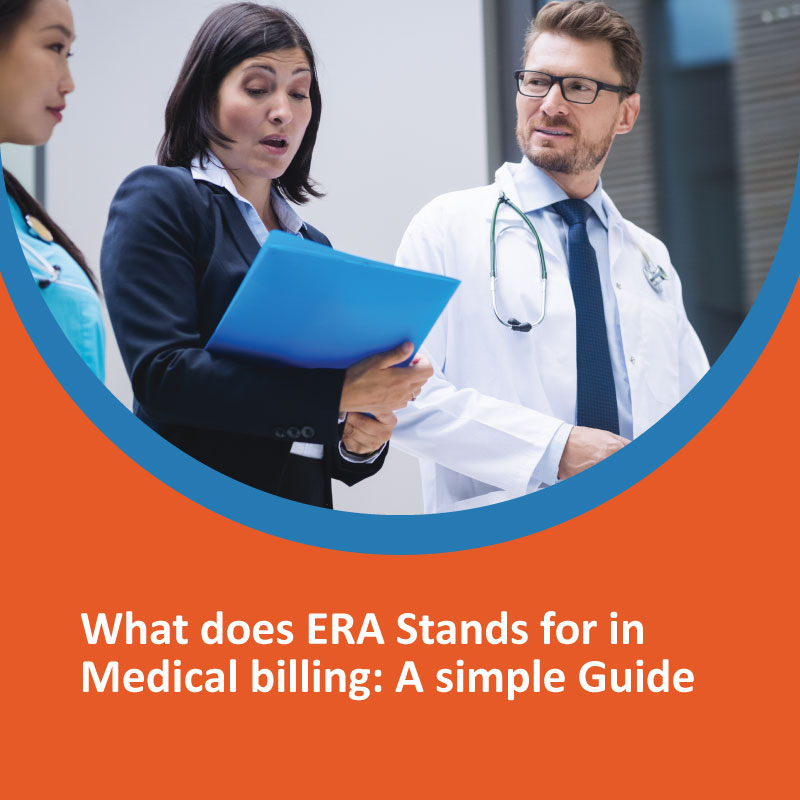When people ask, “What does ERA stands for in medical Billing?”, they are trying to understand a key part of the healthcare Billing process. ERA stands for “Electronic Remittance Advice.” It is the digital version of the old paper Explanation of Benefits (EOB). Instead of waiting for statements by mail, medical providers now get a secure electronic file that shows exactly what was paid by insurance, what was adjusted, and why. Understanding ERA is essential for smoother, faster, and more accurate medical Billing.
You may read: How to Use POS 11 to Improve Medical Billing
Why Knowing ERA Stands for in Medical Billing Matters
Understanding what ERA means in medical Billing is more than just learning a term. It shows how Billing is getting easier and faster. Before ERA, office staff had to handle piles of paper. They typed numbers by hand. It was slow, and mistakes happened often.
Now, with ERA, payment details come electronically. They arrive in just a few days. There’s less waiting. Fewer errors. And follow-up is much faster.
An ERA simplifies the Billing process by automatically matching payments to the claims submitted. It shows the clinic what has been paid. It also shows what should be written off. And what the patient still needs to pay. This helps keep things clear and up to date.
What an ERA Looks Like
To understand what era stands for in medical billing, it is helpful to know what an ERA file includes. An ERA is a data file that Billing software reads and processes. The provider doesn’t need to read the raw data—modern Billing systems do that automatically. The software uses this file to post payments, flag denied claims, and list any remaining balances for patients.
A typical ERA file has three sections.
“The first part is the header. It shows who sent the payment and who got it. It also shows the date and how the payment was made.
The second part gives details of each claim. It includes how much was billed, how much was paid, any changes made, and why those changes happened.
The third section includes overall adjustments for the provider, such as interest or overpayment deductions.”
To make everything clear, ERA files use standardised codes. These codes show why a payment was changed or denied. They help billing staff quickly see why something was not paid or why the amount was less.
How ERA Fits into Everyday Workflows
Another essential part of knowing what era stands for in medical billing is understanding how it works in daily Billing tasks. The process starts when the provider sends a claim to the insurance company. The company checks the claim. Then it either approves or denies it. After the decision is made, the insurance company sends a payment using Electronic Funds Transfer (EFT), along with an ERA file.
The Billing system reads the ERA file and posts the payment details to the correct patient account. Any unpaid or denied items are flagged so the Billing team can follow up. This all happens quickly and with much less effort than the old paper-based method. It helps clinics and hospitals keep up with payments and handle denials without delay.
Significant Benefits of Using ERA
When you understand what era stands for in medical billing, you also see how it improves a healthcare provider’s workflow. The most obvious benefit is speed. Instead of waiting days or even weeks for paper EOBs to arrive, ERA files are delivered electronically within just a few days. That means payments get posted faster and patients are billed more quickly.
Another significant benefit is accuracy. Since the payment details are imported automatically, the chance of human error is much lower. Billing staff don’t have to type in numbers or match payments to claims manually—they just review what the system has processed.
ERA files also bring more clarity to the process. Each adjustment or denial comes with an explanation code. Making it easier to understand the reasons behind the changes. This helps staff make better decisions and follow up on unpaid claims more effectively.
What the Rules Say
If you’re curious about the legal side of what era stands for in medical billing, here’s what you should know. ERA is a required standard under federal healthcare laws. Providers and insurance companies that use electronic Billing must follow specific guidelines to make sure everything is secure, accurate, and consistent.
The format used for ERA is known as the X12 835. It was created to make the exchange of payment information easier and more efficient. Using standardised formats helps different systems “talk” to each other, even if different companies made them.
Common Misunderstandings
People often mix up ERA with other terms, so when learning what era stands for in medical billing, it helps to clear up a few myths.
First, ERA does not move money. That’s the job of EFT, or Electronic Funds Transfer. ERA just explains what the payment is for. Second, ERA is not the same as an EOB. The EOB is meant for the patient, while the provider uses the ERAr. Lastly, ERA can be used even if EFT is not, although using both together gives the best results.
Getting Up and Running with ERA
If you’re a healthcare provider or Billing specialist, you’ll want to take full advantage of ERA. Start by checking if your Billing software supports ERA files. Most modern systems do. Next, you need to enroll with your insurance payers or through a clearinghouse that handles ERA and EFT setup.
After enrollment, test your system to make sure everything is working correctly. Your team should also get basic training on how to review ERA data and follow up on any denied or unpaid items. Once you are set up, the whole Billing process becomes quicker, cleaner, and easier to manage.
Conclusion:
Now that you know what ERA stands for in medical Billing, you can see why it’s such an essential part of modern healthcare. Electric Remittance Advice helps offices keep track of their money, speed up Billing, and avoid mistakes. ERA makes more time for what’s most important: taking care of patients. It is achieved by replacing manual work with quick, accurate computer processing.
If your office still uses paper for Billing and EOBs, moving to ERA might be the best thing you have ever done. It makes your work easier, more reliable, and clearer. You are already ahead of the game now that you know what ERA stands for in Med Billing.
Frequently Asked Questions
1. How soon will I get an ERA after a claim is processed?
Usually, within one to three business days after the insurance company makes payment.
2. Do I need to sign up for EFT to receive ERA?
No, but it is strongly recommended. EFT delivers the money, while ERA explains it.
3. Does the patient receive an ERA?
No. The ERA is for the provider. Patients receive an Explanation of Benefits (EOB).
4. What if my system can not read ERA files?
You may need to upgrade your Billing software or use a clearinghouse that can convert the files into readable formats.
5. Are ERAs secure and private?
Yes. ERA files follow federal privacy and security rules to protect patient information.



